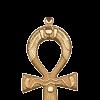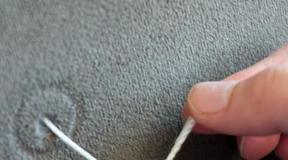Chinese tea drinking traditions. Chinese tea ceremony. Gong Fu Cha Tradition
China is one of the most colorful countries in the world. Here lives a nation that sincerely respects its history, strives to preserve traditions and carefully treats everything that reminds of family and ancestors. The process of drinking tea here is turned into a whole ceremony, which is filled with deep meaning and gives true enlightenment to each participant.
Basics of tea drinking in China
The period of drinking tea by the Chinese lasted for thousands of years, although the conquest of the world with this valuable drink began only in the 16th century. Around the 15th century, the tea ceremony in the Middle Kingdom acquired its traditional appearance, the stages were finally formed and a set of tea utensils was established.
Why did such a philosophical and respectful attitude towards tea and its consumption originate in China? Tea here has always been considered an expensive product and very beneficial for health, so only wealthy people could afford to drink this drink, and rare loose leaf teas were consumed exclusively by the imperial family. In addition, the process of growing, collecting and processing leaves was kept secret for a long time, and seeds, and especially tea bushes, were forbidden to be exported outside the state. For any disobedience, serious punishment was imposed, including execution.
Each stage, in accordance with which certain actions are carried out to introduce, prepare and consume a hot aromatic drink, is filled with a special meaning. They are designed to give a person peace, pleasure, help him to know himself and understand others. A foreigner may view the Chinese tea ceremony as a theatrical act, but every resident of the Middle Kingdom experiences every stage of it on a spiritual level.
Oolongs are most often used in the tea ceremony.
It is not for nothing that the family takes great care of the tea sets that they inherited from their ancestors. There is also a tradition of regular gatherings of all family members on weekends, at home or in a restaurant, to express the children's respect for their parents and vice versa. Drinking tea together strengthens family ties and preserves traditions.
They say that if the ceremony is carried out according to all the rules and each participant has previously prepared spiritually and morally, you can cleanse your mind and soul of negativity, restore good relationships with others, and even come to an understanding with your companions. It is not for nothing that traditional tea parties are included in the program of many business negotiations and meetings, even at the national level.
In the East they believe that if you follow traditions and do everything the way your ancestors did, you can restore balance and harmony between the outside and inner world, stop time and even reverse the course of events. This is why there are no secondary things or rituals in Chinese tea drinking. Every little detail is important here, from the size of the spoon used to pour the tea to the tiny inscription on the cup.
Stages
The Chinese tea ceremony is the basis of many similar traditions for which Japan, Korea and other countries are known. According to the rules, it should be held in a tea house, where there is no bright lighting, the color palette is muted, beige-brown, gray-green, repeating the main natural colors. Flowers can be placed in a vase; quiet Chinese music and sounds of nature can be played in the room. Everything should relax, calm and set you up for the sacrament. A prerequisite is the presence of a large table, at which all guests will be comfortable and where all the dishes can be freely placed.
The owner of the house or the master who is invited to conduct the ceremony arranges the dishes beautifully and in a certain order, heats the water in a kettle or a special pot. Now you can begin actions that may seem ritual to a stranger.
The following stages of classic tea drinking are distinguished:
- Wen Hu Tang Bei involves heating and rinsing the yixin, the procedure lasts 2-3 minutes. The point is to remove possible dust particles from the dishes and prepare them for brewing tea. First, hot water from the kettle is poured into the yixin, bowls or cups are rinsed from it, and then the teapot itself is rinsed. Everything is done on a tray with a drip tray where the water drains.
- Zhan Shan Jia Ming involves introducing each participant to the type of tea chosen for the ceremony. Dry tea leaves are poured into Cha-Hae and passed from one guest to another. Each of them, lifting the lid of the vessel, inhales its aroma and evaluates it. Familiarization occurs in a circle from left to right. First, the participant in the ceremony must warm the tea leaves with his breath, and then enjoy its aroma, color and beauty of the twisted dry leaves. At the same time, a conversation can be held praising the tea, the pleasant atmosphere, the experience of the master, and so on.
- Wu Long Ru Long is the preparation and pouring of the required amount of tea leaves into Yixin. This is done with a small bamboo spoon, which holds approximately 15 grams of tea leaves, which is designed for 50 ml of water - the volume of a standard bowl. Since yixing can have a volume from 150 to 350 ml, from 3 to 7 heaped spoons of tea leaves are poured into it.
- Suan Hu Gao Chong - involves washing the tea leaves from dust and preparing the leaves for the main brew. This is done in a sizzle, into which water heated to the desired temperature is poured in a high stream, making gurgling sounds. Here it is important to maintain the desired water temperature and not overexpose the leaves in it. The tea must be cleaned of possible dust and impurities and slightly softened in order to maximize its taste and aroma during the main brewing. The height of the stream of water that pours out of the kettle also plays a role. It can reach 70 cm; the entire kettle is filled to the brim with water.
- Chun Feng Fu Mian is a procedure for cleansing tea leaves filled with water from debris and impurities. This is done using a porcelain spoon. After the bubbles and specks are removed, close the lid of the yisin and keep the tea in it for 1-2 minutes. Next, the water is poured into a separate container - this infusion is not consumed.
- Zai Zhu Qing Kuan - involves brewing softened leaves with hot water. The height of the water stream that is poured from the teapot into Yixing should not exceed 15 cm. It is believed that the lower the water stream, the slower and better quality the tea is brewed. The result is the first true tea.
- Mom Lin Gai is the repeated cleansing of blue from bubbles, foam and floating leaves. The Yixin is closed with a lid and after 30-60 seconds you can begin serving the ceremony participants.
Tea drinking is always hosted by the owner of the house. After the tea is brewed, it is poured into the so-called cup of justice, or Cha-Hai, where it is mixed and the flavor is evenly distributed. From Cha-Hai the drink is poured into bowls. First, the drink is served to the oldest guests, thereby expressing their respect and respect. The procedure for drinking tea directly can be repeated several times depending on what type of tea was used. If it is a high-quality oolong, then the fox is filled with water up to 6 times, and if it is pu-erh, then up to 10-16 times.

Clay yixin is the best vessel for brewing elite tea
When the bowl is brought to the mouth, etiquette allows for no more than three sips of tea. The first small one prepares the taste buds for perception. The second full one allows you to evaluate the taste, and the third, also small, is designed to form an aftertaste. Then the ritual is repeated until the liquid in the bowl runs out. If bowls with a volume of less than 50 ml are used, the entire drink can be drunk in 5 or 7 sips.
At the end of the ceremony, the host can lay out all the yin leaves and offer them to the guests for review and in order to show gratitude to them for the wonderful taste and pastime. After this, all the dishes are thoroughly rinsed with boiling water and left on Cha-Pani. No chemical antiseptics or detergents are used. After drying, the dishes are carefully polished with a linen cloth.
During the ceremony in China, it is customary to communicate. This is a lively conversation on various topics, although not as active as at home or at work. A person subconsciously relaxes, and therefore his speech and thoughts are put in order, become unhurried and deep. It is not customary to bring up family problems in public, so the topic of conversation is usually abstract and positive.
Chinese traditions do not require frequent ceremony. Tea drinking, according to all national rules, is held on special occasions from weddings to birthdays. But in order to preserve traditions and unite loved ones and friends, weekly participation in the ceremony is considered the most correct.
Teaware
The utensils used for tea drinking are selected no less carefully than the tea leaves themselves. The greatest value is that which belongs to more than one generation of the family. In the era of emperors, one could tell by the dishes and their decor about the class to which its owner belonged. This was indicated by the colors of the dishes and the inscriptions on them. Traditionally, tableware for the tea ceremony in China is a set of:
- a cauldron in which soft spring water is heated to the desired temperature;
- a set of gaiwan, which is equal to the number of guests or a set of bowls and saucers;
- a teapot with an average volume of about 300 ml, in which the leaves are brewed - blue;
- bowls in which ready-made tea poured from yixing is mixed - cha-hai;
- a special Cha-hye box in which tea is offered to guests for review;
- Chapani - a stylized tray on which all the dishes are placed;
- strainer for blue;
- a porcelain spoon for removing bubbles and debris during the first and second brewing;
- a special bamboo spoon, with which the required amount of tea is measured.
The tea ceremony held in mainland China is different from that in Taiwan. The differences relate to some changes in the stages of tea drinking and the presence of additional devices in the teaware. But the essence and quality of the prepared drink remains unchanged.
Tea traditions
China is a country where family ties are especially revered. That is why there are such traditions as:
- family meeting;
- sign of respect;
- expression of gratitude;
- apology, etc.

Drinking tea together is a way to maintain strong family ties
At a wedding, to unite the whole family, the newlyweds serve a bowl of tea to each guest, thereby expressing their respect and respect for their relatives. In addition, the wedding ceremony serves as a unique way for the newlyweds to meet each other’s relatives, of whom there are sometimes a lot. In addition, an important point is that young people serve tea to their parents. They kneel down and present bowls with the best drink.
Parents, in turn, take bowls, drink tea and give their children a scarlet envelope, symbolizing good luck.
To express sincere regret, which can almost never be rejected, the tea ceremony is also used. The same goes for expressing gratitude. To reunite the family, parents and children have tea together at least occasionally, even when the families are far from each other. Such family meetings are held on Sundays in the parent's home or restaurant.
Drinking tea in China can be compared to meditation. This is a leisurely, relaxing ritual in which every movement is filled with meaning and is performed taking into account special rules. This is one of the most colorful national traditions, which is more than 5 hundred years old.
In the life of the Chinese, tea has a special meaning, and tea drinking is a ceremony in which a certain sequence in brewing tea is observed. The main goal of the tea ceremony is to more fully reveal the aroma and taste of the drink. An indispensable condition for the ceremony is a calm state of mind. The special atmosphere of the ceremony is created by ornate tea utensils, small exquisite dishes, and calm, quiet music. Most Chinese prefer to drink tea at any time of the year: both in the cold and in the heat. This drink perfectly quenches thirst and strengthens the immune system.
Chinese tea culture implies methods of preparing tea, dishes and equipment used for this; and events that serve as an occasion for tea drinking.
The Meaning of Tea in Chinese Culture
In China, tea is one of the "seven daily necessities": rice, salt, oil, vinegar, soy sauce and firewood. Chinese tea culture has some differences from Japanese, European and British tea drinking, methods of preparation, and drinking. In China, it is customary to drink tea both in everyday situations and during rituals and official events. Tea is not just a drink; it occupies an important place in Chinese cuisine, traditional Chinese medicine and Buddhism.
The tea growing and drinking traditions listed as “Chinese” would more accurately be called “the tea culture of the Central Plains of China.” In addition, there are largely original tea traditions of Southwestern China, the routine of which is widespread in the provinces of Guizhou, Yunnan, and Sichuan. These areas, where tea has been grown since ancient times, have been much less influenced by outside influences in modern times, and therefore have preserved many old tea traditions that have long been forgotten in the regions of Central China.
The tea culture of Tibet is also immensely original. According to many, it developed during the Tang Dynasty in the mid-700s. In Tibet, it is customary to drink butter and milk tea, which is completely uncharacteristic of the rest of China.
In the southern regions of China there is Yamcha(“tea drinking”) is a type of tea culture. In Macau, Guangdong, and Hong Kong, it is customary to drink tea in the morning before starting the work day. At the same time, the drink is drunk as a snack with various snacks - dim sum.
In ancient times, residents of Southern China retired to tea houses to drink tea. Busy dim sum restaurants are popular now. The “yamcha” ritual is observed especially carefully by pensioners. Tea drinking is often preceded by tai chiquan(Chinese fist waving) is a type of wushu.

Hong Kong tea drinking traditions are characterized by certain conventions. If a visitor wants to give a sign to the waiter that the teapot has run out of tea, then it is necessary to remove its lid and place it next to the teapot on the tablecloth.
Tea drinking customs
Tea is a traditional drink in China, consumed every day. However, among the younger generation of Chinese, there has been a decrease in interest in tea drinking and a passion for Western sweet carbonated drinks. Some Chinese scientists regard this as a worrying symptom.
Currently, family tea drinking is becoming a tribute to tradition and an opportunity to commemorate family unity on the occasion of some celebration. To do this, it is customary to brew green tea in a large teapot (faience, porcelain, clay) for the whole family, after which it is poured into bowls or cups, from which they drink.

The Chinese identify several types of special circumstances for preparing and drinking tea together.
"A sign of respect." Offering a cup of tea is a way of showing respect to elders in Chinese society. And one of the traditional pastimes on weekends in China is inviting older relatives to a restaurant for a cup of tea, paying for the tea party. In the past, this drink was always served by people who occupied the lowest rung in the social hierarchy. Due to the liberalization of society in modern China, there are cases where parents offer tea to their children, and even the boss pours tea for his subordinates. But at an official event, a more senior participant will never present tea to a subordinate.
"Apology". In Chinese culture, there is a custom of pouring tea to the person from whom forgiveness is asked or to whom an apology is being made. This is a sign of sincere repentance and submission.
"Family Meeting" Having gone to distant lands to study or work, and having started their own families, children visit their parents less often; Grandparents rarely meet their grandchildren. Therefore, joint tea drinking in restaurants is considered a particularly important part of family meetings. On Sundays, Chinese tea houses are full of visitors, especially on holidays. This once again confirms the importance of family values in China.

“Expressing gratitude to elders on your wedding day.” The bride and groom in a traditional Chinese wedding ceremony must kneel in front of their parents and offer them tea as a sign of respect. At the same time, the newlyweds say: “Thank you for raising us. We are eternally indebted to you!” The parents drink tea, then the newlyweds are given a red envelope as a symbol of good luck.
“Uniting a large family on a wedding day.” The wedding tea ceremony is also a way for the families of the bride and groom to meet. Since Chinese families are often large, it happens that not all family members get to meet each other at a wedding. This happened in ancient times if the father of the family had several wives, and, as a rule, relations between individual family members were strained. During the wedding tea ceremony, it was customary for the newlyweds to bring tea to each family member, while calling his name and official title. Drinking tea together served as a symbol of welcoming new members into the family. To refuse tea meant to “lose face,” i.e., to oppose the marriage. After older relatives were introduced at the ceremony, they gave red envelopes to the newlyweds, and the newlyweds gave red envelopes to young unmarried family members.
"Maintaining tradition." There is a tradition in Chaoshan culture to gather in a tea room with relatives and friends for the Gongfu Cha ceremony. During the ceremony, older participants share with younger participants about rituals and rules, passing on ancient traditions to them.

Gratitude for tea(Koutou fingers)
A guest who has been served tea, to demonstrate his gratitude, can knock on the table three times, bending his index and middle fingers at the phalanges. This custom is called " koutou fingers"and is widespread in Southern China (Hong Kong, Guangdong, Macau); in the rest of the country such habits are not usually followed.
They say that this tradition originated during the Qing Dynasty. Emperor Qianlong traveled incognito around the Celestial Empire, he really wanted to know what the people thought about the government. One day, the emperor sat down in a tavern next to two people drinking tea and started a conversation with them. It immediately became clear to the men that it was not an ordinary resident talking to them. They wanted to fall on their knees in front of him, but they realized that if everyone knew that this was the emperor, they could be executed. The young people talked with the emperor as with an equal, and such a ruler was considered majestic and untouchable.
Having finished drinking tea, the men stood up and one of them made a gesture with his fingers: he placed his index and middle fingers on the edge of the table, then repeated the same gesture, but with bent fingers. The ruler did not understand the gestures and asked for an explanation. To which the young man replied: “We know that before us is Your Majesty. We will now be executed for talking to you. But I really want to express our deep gratitude to you on behalf of all the people. These gestures mean that your people bow to you!” After these words, the men left. The Emperor was very surprised and pleased at what the people thought. Since then, it has been customary to show respect to a person for drinking tea with a similar gesture.

How to brew tea in China
In the Middle Kingdom, there are many different ways to brew tea, depending on the reason and circumstances of the tea party, the type of tea being brewed, and the income of the participants. Thus, green tea is more delicate than black tea or oolong, and not very hot water is used for brewing.
In a cup of chaow (gaiwan) Any tea can be brewed, but this method is best used for weakly fermented types.
Gaiwan is the current name of the vessel, literally translated “bowl with a lid”, or another name is gai bei - “cup with a lid”, or jiu zhong - “vessel for locking heat”. The method was borrowed from the Chaoshan people, who called this vessel “chaou”.
Chaou is a set that includes a cup, lid, and saucer. It is used both on its own and in combination with tea cups. If you want to try tea, brew it in chaow. Here it is important to feel the neutral taste of the tea, see the tea leaves brewing and smell them. This brewing method is used for everyday tea drinking, although it can be used in certain formal situations.

Particularly popular is the method brewing in a teapot. In this case, tea is brewed in a large (so that the volume is sufficient for all those present) teapot made of porcelain, clay or earthenware. The peculiarity of the Chinese teapot is that the tea leaves are poured into a small, perforated glass-strainer inserted inside, made of the same material as the teapot.
When brewing, the strainer is filled halfway - two-thirds with dry tea, i.e. it acts as a tea leaves dispenser. Hot water is poured into the kettle through a strainer cup, “rinsing” the tea leaves. When the kettle is full and the tea leaves have soaked, you can additionally squeeze it out a little with a spoon for a richer extraction. There is an opinion that tea is washed better in a strainer and releases the substances it contains more completely. Higher grades of green tea and oolong tea can be brewed several times. The water temperature and infusion time depend on the types of tea.
Gongfu Cha tea ceremony its popularity owes to the traditions of the peoples of Chaozhou or Chaoshan and Minnan. This method uses a small teapot with a capacity of about 150 ml, made of Yixing clay (Zisha). The teapot not only serves as a decoration for the ceremony, but also helps to “round out” the taste of the tea. The method of brewing in a Yixing teapot is used both for individual tea drinking and for treating guests.

The brewing method used only for oolongs is considered an art in China. The water is heated to approximately 95 degrees. In order not to spoil the water and tea, you should not boil it. Warm up the dishes; To do this, water is poured into a teapot and cups. You definitely need to get acquainted with tea: examine and breathe the tea leaves. The amount of tea leaves is poured into the kettle in accordance with its volume. Then you need to “sweep out the tea,” that is, remove the tea dust. Water is poured into the kettle from a great height and immediately poured out: the first brew is not drunk. The newly poured water is infused depending on the type of tea. Good oolong teas are brewed five to seven to ten times. During the ceremony, the soul and body should be calm, as this is a very important event. For such tea drinking, it is advisable to have a teapot made of Yixing clay, a set of tea tools, a tea board, chahai, chahae, a tea pair, and a live fire teapot for water.
National Tea Museum
In the spring of 1991, it opened in Hangzhou (Zhejiang Province), the tea capital of China. China National Tea Museum, revealing various aspects of Chinese tea culture. The museum exhibitions, located on 3.7 hectares, are surrounded on all sides by tea plantations. The museum provides an opportunity not only to look at teapots, cups and other accessories of tea ceremonies two thousand years ago, but also to take part in a tea ceremony.

Now in China, more than 500 thousand tons of tea are consumed every year. Tea culture has become a precious asset of the Chinese nation on both material and spiritual levels.
tea ceremony
(Gong Fu Cha) has been more than just preparing and drinking tea since ancient times. The very meaning of the word in Chinese suggests that this is a high art, a kind of ritual for all participants. Starting from the 17th century, this cultural phenomenon began to become very widespread.
The Chinese prefer tea at any time of the year, because if needed, it will warm you up, and if it’s hot, it will help quench your thirst. The fast pace of modern life has accustomed us to tea, which is brewed in bags and drunk quickly. The concept of the tea ceremony is completely opposite and often seems something exotic and outlandish.
Gong Fu Cha should not be confused with the Japanese tea ceremony. There is one very important difference between them, which is related to the meaning of the action itself. For the Chinese, it lies in tea - it is important for them to appreciate the richness of the aroma, the depth and subtlety of the taste of the drink, and the aftertaste and mood it gives.
The emphasis is on brewing, and the success of this task directly affects the participants' enjoyment of the taste and aroma of the drink and the creation of a pleasant atmosphere. But among the Japanese, the main role is played by the symbolism of the ritual.
History of the tea ceremony

Preparations for the ceremony
Tea was not always known in China. It is believed that the properties of tea were discovered by Shen Nong, the mythological and cultural hero of the nation. Traveling around his native lands, he acquired knowledge about the properties of plants, consuming them and trying to understand how they affect the body.
One day such an experiment ended unsuccessfully and Shen Nun fell ill. According to legend, he swallowed a drop of dew that rolled down from a bush unknown to him and healed him, cleansing him of toxins. Also, he really liked the taste and feeling of freshness given by the leaves of the plant. Shen Nong considered it a gift from heaven. This is how the wonderful bush got its name, and tea became an important healing remedy among the Chinese.
About three thousand years ago, people discovered the benefits of using the tea bush. At the very beginning, not only leaves were used, but also branches of bushes, which were thrown into boiling water to achieve a medicinal effect.
The taste of the drink was very unpleasant and very bitter. The leaves were also eaten with regular food due to the fact that the varieties of the plant at that time were not suitable for brewing and enjoying the taste of the drink. But later, when plant species more familiar to us were bred, the history of making the drink began.

Only the rich drank tea
At first it was the drink of the rich. The approximate date of its spread among the ordinary population of China is considered to be the 1st century BC. e., during the reign of the Han Dynasty. Around the same time, the Chinese learned to dry tea leaves and grind them. The resulting powder was brewed in boiling water. To diversify the taste of the drink, citruses and ginger began to be added to it.
The popularity of tea led to the emergence of the art of preparing it, and people began to write songs about it and depict it in drawings. It took two thousand years to improve the method of preparing the drink, creating the right technique and the necessary utensils. This time period allowed the structure of the tea ceremony to be minted down to the smallest detail.

Teaware
As a result, the Chinese created dishes suitable for this purpose, additional tools used in the process of preparing the drink, and improved brewing methods depending on the variety. This is how the first documented three-volume poetic description of tea appeared, which dates back to the 8th century and is known as “Treatise on Tea” by Lu Yu.
It is noteworthy that this collection of tea culture provided a detailed description of all varieties, explained the correct preparation, described water requirements and listed the best sources, and also gave a detailed description of all the tea traditions that existed at that time in different regions.
During the Tang Dynasty, the popularity of tea led to the fact that festivals dedicated to tasting the drink began to be held everywhere. In schools, temples and even in the palace, ceremonial tea parties were held strictly according to the rules of good manners. At the same time, only good tea and beautiful dishes were used.
As a rule, there was one specially appointed person at the head of the tea tasting. His duties included constant control over the preparation of tea and providing attention to each invitee. Participants in the festival learned to inhale the aroma of tea, understand its color and describe the facets of taste. Such a meeting ended very poetically - the guests began to talk about lofty things, putting their thoughts into poetic form.
With the advent of tea varieties and the development of medicine, the Chinese began to distinguish taste preferences by season. Flower tea was chosen for spring, and green tea for summer. In winter they preferred black tea, and in autumn they drank green young tea.
China's climate, with plenty of rain and fertile soil, creates ideal conditions for growing high-quality tea and encourages experimentation and the development of a wide variety of tea varieties. The location of the plantation, temperature changes, and harvest time are important influencing factors that determine the flavor of the tea.
The creation of a particular type of tea is directly influenced by the way the leaves are processed. Manual labor during harvesting is extremely valuable. Collect tea shoots that have one or two young leaves.
The next step is drying the collected leaves in the sun or in the shade - the chosen method determines the future type of tea. Next, the dried leaves are fermented. The last stage is processing and giving the product a finished look.
Many methods of processing tea leaves were invented - roasting in cauldrons, drying, boiling, rolling, etc., which made it possible to obtain red, yellow, white, green and other types of teas. Those, in turn, were then divided into even more subspecies. Today, there are about 1,500 varieties of tea and each of them has its own unique taste and aroma.
The extent to which tea is ingrained in Chinese culture can be judged by the number of different organizations and groups dedicated to tea. These include museums, learning centers, quality societies, and tea culture organizations.
Choosing tea for a tea ceremony

A special type of tea is used for the ceremony -. When brewed, it is not as strong as black tea, but it has much more diverse properties than ordinary green tea. Therefore, sometimes oolong is also called imperial tea.
It belongs to the semi-fermented group - the leaves are dried and rolled using a special technology. Its leaves contain a lot of vitamins and minerals and a high percentage of organic acids.
Accordingly, such tea requires a non-standard approach to preparation. It is the subtle ability to reveal his secrets without any haste that will allow you to appreciate all the nobility of his taste. That’s why it reveals itself in the best possible way under the master’s hand during the tea ceremony.
Oolong tea for the tea ceremony must come from China, otherwise there is a risk of getting low quality tea. It should not contain any artificial flavors or additives. It is acceptable to contain ginseng, rose petals, and the aroma of cream (if it is milk oolong).
A high-quality product can be purchased in special tea stores. When purchasing, you should pay attention to its price - good tea of this type cannot cost little, since it is collected manually in the highlands. In addition, high-quality oolong has the most beneficial properties.
Water and utensils are important foundations of the ceremony
From ancient times to this day, very high demands have been placed on the purity of water, so for the ceremony it is collected from springs in the mountains. In order to be suitable for tea, water must undergo a natural purification process.
Of course, the dishes used for the tea ceremony play a special role. As a rule, this is a whole set that includes:
- two kettles - one for water and the other for brewing;
- strainer;
- tea cups - bowls and tall cups in pairs;
- vessels for storing tea, tasting it, and pouring the drink;
- board to collect water;
- auxiliary tools for cooking - alcohol lamp, tongs, funnel, brush, spoon and needle;
- as well as a tea deity.
Each auxiliary item helps to reveal the most subtle notes of the aroma.
Gong Fu Cha is not only an opportunity to enjoy every cup of tea you drink, it is also an opportunity to observe the skillful movements of the master and appreciate the aesthetics of the action itself. The host of the ceremony traditionally answers questions from guests and makes explanations as necessary.
How to Prepare for a Tea Ceremony or Gong Fu Cha
It is wrong to perceive Gong Fu Cha as the final stage during a meal. This is a completely separate event, which means that the stomach should not be burdened with digesting food. But you don’t need to go to the ceremony hungry, otherwise the tea may cause some stomach irritation.
Several hours should pass after eating. In order to capture every tea note during the ceremony, you need to be selective about the food you will consume beforehand. You should not give preference to dishes with pronounced taste properties and containing a large amount of spices, too sweet or, conversely, salty or sour.
Another important aspect that can negatively affect the perception of tea is the use of perfumes, smoking and alcohol. It is a good idea to wash your hands before the tea ceremony.
These are all important little things to listen to. The taste perception should be as cleansed as possible, because during the event guests will be offered more than one cup of tea. Oolong will be brewed again and again, each time revealing it in a new way.
If you adhere to these simple requirements, then participation in the ceremony and every cup of tea you drink will give you vigor, strength and a feeling of unprecedented lightness.
Features of the tea ceremony
First of all, you should know that such an event can only be held by a person who has the skills and experience, understands tea utensils, and is able to present his art. The tea party itself takes several hours.
So how does Gong Fu Cha work?
The master places all the beautiful utensils in their places to create the appropriate atmosphere. Then, it begins to heat the water. The water will be ready to drink as soon as it starts to boil.
Using a bamboo spoon, tea is poured into a vessel (chahe), which guests pass from hand to hand and study the appearance and aromatic properties of the tea, inhaling it twice. It is strictly forbidden to touch tea leaves with your hands. The rationale behind the ban is that the smell of your hands can harm the integrity of the aroma of the tea, which means extreme caution must be exercised.
The next step is to heat the teapot (chahu). It is usually made of clay, but can sometimes be made of porcelain or ceramic. Then, a portion of tea is placed in it and filled with hot water. The tea is poured using a spoon and a funnel made of wood - it protects the tea from spilling. The teapot is covered with a lid and a towel and periodically rocked from one side to the other so that the water mixes well with the oolong.
The first brew is unsuitable for consumption, since its task is to prepare the tea leaves for opening.
It is used to heat bowls and tall tea cups. Already aged oolong is poured into a drainer (chahai), from which tea is poured into cups for guests. And then, the brewing process is repeated again.
Each guest is provided with a pair of tea - two cups, a small round bowl (pingbei) and the cup itself (xiangbei), narrow and tall. Before the ceremony begins, they are placed on a special stand (beizhan) of a tea tray (chapan) as part of the composition.
Water is also poured into it if necessary. The finished tea is poured into tall cups, filling a little more than half the container. Cover it tightly with a small cup on top and turn it over. Interestingly, an experienced master performs this action with one hand.
Each of the cups plays its role - the small one allows you to enjoy the taste and color of the drink, while the tall one provides an excellent opportunity to fully enjoy the variety of aroma. To do this, it is recommended to inhale the smell with your eyes closed - this will sharpen the perception of every aspect of it. Drink a serving of tea in three or seven sips. Each new brew must be kept a little longer than the previous one.
Using tongs, the teapot is cleaned of tea leaves, and the strainer is cleaned with a needle. There is also a so-called tea paddle - it is used to remove the foam that has formed after the first brew of tea. The brush is used to wipe the teapot during tea drinking.
Traditionally, the first seven cups of tea carry the following meaning:
- the first introduces tea, guests try to understand its taste;
- the second helps to get rid of negative emotions and mental anguish;
- the third serves as a brain exercise;
- the fourth helps you forget about your troubles;
- the fifth cup is a cleansing cup for the body;
- the sixth gives rise to thoughts about the spiritual realm and heaven;
- the seventh cup – gives the highest degree of lightness and relaxation.
The rule of good conversation is to discuss tea and mention Lu Yu (tea deity), whose statuette is an indispensable accessory of the ceremony.
A mandatory attribute of Gong Fu Cha is the sound of quiet traditional Chinese music, which helps create a pleasant, relaxed atmosphere. Its goal is to help participants feel the action and noble taste of the drink, fully appreciate its color, inhale the aroma, cheer up and improve their mood. The gentle whisper of flutes will help you forget about all the troubles in life, get distracted and plunge into the magical world of tea.
Chinese tea culture
The reason for tea drinking in the Middle Kingdom can be anything. But, as usual, it carries with it an attempt to express one’s positive attitude towards another person.
- Let's look at some examples:
- Repentance - if a person offends another, then as a sign of reconciliation it is necessary to offer him tea. Such a gesture constitutes a sincere attempt to apologize for one’s actions.
- Respect - offering a cup of tea to someone older in age or showing respect to anyone, regardless of their work status, is considered an important aspect of Chinese culture. Also, there is a tradition of inviting your relatives (older in age) to drink tea and pay for its cost.
- Family tradition - in China they love to get together with the whole family and drink tea. During such meetings, older family members teach ancient traditions to younger ones.
- Gratitude to older family members on the wedding day - kneeling down, the newlyweds treat their parents to tea and say words of gratitude for everything they have done for them. In addition, according to Chinese traditions, during the tea ceremony the bride and groom are introduced. New husband and wife also perform Gong Fu Cha to bring families closer together. In this case, no one can refuse to accept a cup from the hands of a young couple, since this will be interpreted as rejection of the marriage.
Chinese tea culture reflects a special religious relationship - unity with Tao. The tea ceremony is aimed at creating harmony and achieving complete calm and regularity. Only by being in a serene state can a person enjoy communication and feel joy.
And finally, look at how to conduct Chinese tea ceremony.
Tea occupies a special place in Chinese culture - it is believed that tea drinking should accompany every significant event in life. The Chinese tea ceremony is called “Gongfu Cha” and resembles a quiet meditation that puts participants in a contemplative mood. When the doors of the soul are closed to vanity, the mystical celebration of tea begins.
There is no wrong time to brew tea, only the wrong mood – the Chinese are convinced. In China, tea is considered an essential product as it is consumed daily. There are still special instruments for the tea ceremony in every family's home, although they are used only on special occasions.
Tea accessories for everyday tea drinking are not particularly sophisticated - it is more important to enjoy the taste of the drink. The utensils have been kept in the family for generations - simple clay teapots and bowls are especially valued. Chinese tea culture calls for a simplified tea ceremony in situations that require inner peace from those present.
It is considered good manners to invite for tea:
- as a sign of respect. Young Chinese often devote their weekends to meetings with relatives or respected people. Tea etiquette requires treating older people with aromatic tea - thus, young people show respect for the knowledge and experience of the older generation.
- to offer an apology or gratitude. It is indecent to apologize or thank someone without a worthy reason. According to tradition, one must have a tea party to properly show one's respect. Before the offering of tea, a speech (of gratitude or apology) is made, and then the achieved understanding is consolidated by drinking tea together.
- during the pre-wedding feast. Carrying out a ceremony when the bride and groom (or their families) meet each other is considered a good custom in modern China. Elder relatives present red envelopes with monetary gifts or good wishes to future spouses. And the young couple greets each guest by name, rank and title, which contributes to the establishment of good family relations.
- during family events. Chinese society values tradition. Not a single important family event can do without a tea ceremony. The ritual part is extremely simplified, but they try to accurately reproduce the desired atmosphere.
Green tea is brewed in a large porcelain teapot and then poured into small bowls - one brew should be enough for the whole family, which every time reminds of the need to share benefits. Simple devices are used, the appearance of which says: “It is not the form that is important, but the essence.”

Coronation tea or the essence of the ceremony
The essence of the tea ceremony is to achieve a meditative state without detachment from the surrounding reality. Tea etiquette allows for quiet conversation during the ceremony, which puts guests on the same page. The only thing unacceptable is a disdainful attitude towards the ceremony, which destroys the magic of ritual actions. Even tea utensils evoke reverence - “new” is not held in high esteem, so ceremonies often feature dishes with a history of three or four centuries.
The Chinese tea ceremony is devoid of pomp and, in comparison, seems simplified. According to the Chinese tradition, pretentiousness only hinders spiritual development, therefore fussy movements and unnecessary details are unacceptable. From the Chinese point of view, the simplest appliances and the best varieties of tea are perfect for each other!
“Minimum rituals – maximum meaning,” is the motto that tea masters follow. The Gongfu Cha ceremony is laconic - the guests’ attention is entirely absorbed by the taste of the tea. The equipment for the ceremony is selected in such a way as to ensure maximum enjoyment of the drink.

Secondary and main things in tea drinking culture
The Chinese tea ceremony celebrates Tea. Expensive tea accessories, the venue and even the personality of the tea master are considered secondary. Tea culture was formed under the influence of Zen Buddhism and teaches participants in the art to see the main thing.
Chinese traditions teach to enjoy the main benefits of tea:
- Leaf shape. Tea etiquette includes the stage of “getting to know” tea. At the beginning of the ceremony, the leaves are poured into a special box, which is passed around in a circle. Guests evaluate the appearance of each leaf (shape, color).
- Aroma. Getting to know tea at Gongfu Cha also involves studying its aroma, both before and after brewing. It is considered sufficient to inhale the aroma of the leaves three times in order to become closer to the energy of the proposed plant.
- Brew color. Teaware allows you to see how the color of the tea leaves changes during the ceremony. Chinese tea culture suggests brewing green tea multiple times. The first brew is drained, and subsequent brews are evaluated by the guests.
- Taste. Miniature tea utensils do not allow you to drink greedily - the drink should be enjoyed leisurely. It is customary to drink tea in three, four or seven tiny sips. In Gongfu Cha, it is believed that this approach sharpens the perception of taste.
What are the benefits of a traditional tea ceremony? Tea drinking in Gongfu Cha is a symbolic reflection of the interaction of Yin and Yang energies. Accessories for the tea ceremony and drinking utensils are used by the master to convey the basic principles of Buddhism.
How is the Gongfu Cha ceremony performed?
Traditions require placing tea accessories on a special tray. The master slowly places the tea accessories on the table, then introduces the guests to the appearance of the tea.
- Preparing tea accessories. The dishes for the tea ceremony are ceremonially doused with boiling water. First, warm the teapot, and then wash other tea accessories with the same water. It is believed that heated teaware helps to fully reveal the taste and aroma of tea.
- Cup of Justice. In Gongfu Cha, a large teapot and a bowl of justice are used to brew tea. Green tea brews quickly, so it cannot be immediately distributed into separate cups - the first infusion will be the weakest, and the last will be the strongest. According to tradition, the brew is first poured into a special tea utensil - “cha-hai” and only then distributed among the guests.
- Brewing principles. The first brew is not used in Gongfu Cha - the Chinese believe that it allows you to wash away dust and cleanse the drink of foreign odors. “What extravagance!” Europeans might think. However, one tea is brewed at least 3-4 times (usually 5-6) before using fresh leaves. This approach allows you to taste all the shades of tea taste. To brew tea, use spring water heated to 70-80 degrees. Boiling water spoils the taste of the drink, so it is used only for washing dishes for the tea ceremony.
- Spilling tea. There are two types of tea utensils: tall utensils (wenxiabei - masculine) and narrow cups with a wide top (chabei - feminine). Such tea accessories symbolize the interaction between Yin and Yang and help to intuitively experience the philosophy of Zen Buddhism. First, tea is poured into tall utensils, and then into wide bowls. Guests then bring their personal devices to their faces and enjoy the aroma. After taking three ritual inhalations and exhalations, you can drink tea in small sips.
- Conversation. What tea ceremony could be complete without philosophical conversations? While preparing the drink, the masters talk about the tea traditions of different regions and share interesting stories from the lives of monks and kung fu masters. After the ritual part is completed, the cultural conversation begins. It is customary to talk about literature, art, philosophy, and scientific achievements.
- Completion. The master washes all the tea utensils with boiling water, wipes them with a clean cloth and slowly takes them away. The ceremony begins and ends without fuss - guests should thank the tea master and each other for a pleasant time, and then go home in a good mood.
The tea ceremony in China helps restore lost mental balance and reminds of the harmony of two principles - tea drinking devices symbolize the energy of Yin and Yang, helping to understand the principles of their interaction. Ceremonial tea drinking immerses you in a meditative state and inspires you with the wisdom of Zen Buddhism.
photo: depositphotos.com/tolokonov, eAlisa, asimojet
The Chinese Tea Ceremony is a kind of meditation. The tea master must maintain a high level of awareness during the tea ceremony.
Guests must also tune in to a specific tea experience. If one of the guests ignores the tea ceremony and does not feel the general mood, then the magic of the tea ceremony disappears.

Chinese Tea Ceremony. In China, many methods of preparing tea have been developed over many millennia. This is how the exquisite tea drinking “gong fu cha” appeared.
During the tea ceremony, they pay great attention to their inner feelings and experiences. They start by trying to feel the aroma and taste of tea as fully as possible and admiring the tea utensils.
Tea can evoke various associations, immerse you in the past, and evoke dreams of the future. . The more attentive and conscious a person is, the more pleasant impressions he can get from the tea ceremony.
You can talk during the tea ceremony, but you must not forget about drinking tea. It’s good if the conversation is conducted quietly and does not disturb the other participants in the tea party.
Chinese green tea is brewed several times, but the breaks between brewings are short and the tea should not cool down. The taste of tea depends greatly on the brewing time. , if you overdo it a little, the tea becomes bitter. After each brew, the tea is completely poured out of the teapot. Tea is drunk without sugar and not eaten during the tea ceremony, so as not to interrupt the taste of the tea.
In China, over many millennia, many methods of preparing tea have been developed, which were intended for various purposes.
This is how exquisite tea drinking appeared - “gong fu cha”, which translated means the highest skill of tea drinking.

Gong Fu Cha literally means the highest art of tea., this is an opportunity to enjoy the four “benefits” of tea: infusion color, leaf shape, taste and aroma.
The symbolic meaning of “gong fu cha” is turning over the cups and tasting the energies of Yin and Yang.
The ritual of Gong Fu Cha requires a special atmosphere and a special attitude.
In preparation for the tea ceremony, the tea master collects the dishes and beautifully arranges them on the “chabane” tea tray.
At the beginning of the tea ceremony, tea is introduced. Tea leaves are poured into a box and passed around. Each participant in the tea ceremony inhales the aroma of tea, getting acquainted with it . Usually three breaths are taken. Air is blown onto the tea leaves to warm them and intensify their aroma.
Before pouring tea into a teapot, fill it with boiling water, then wash other tea utensils with this boiling water, warming it up. The kettle itself is also generously poured with boiling water, using water that was used to wash other dishes.
Since tea brews quickly in a teapot, if it is immediately poured into cups, then the first and last cups will contain tea with a different taste. To avoid this, tea is first poured into the cup of justice .
Tea cups, a teapot and cha-hai are placed on the tea table. Tea is poured into a teapot and poured with boiling water. The first pour is used to wash away tea dust from the tea leaves.
The second and subsequent portions are poured into the teapot (as you drink), and the infusion is poured into cha-hai . From this vessel, tea is poured into tall cups, which are covered with wide cups. This design is turned over and handed over to the tea party participants.
>Raising a tall cup, bring it to the nose and slowly inhale, enjoying the aroma and adjusting the channels of perception. After this, they drink tea, monitoring their feelings.
Tea cups use small 50 milliliters or less. Tea is usually drunk in three, five or seven small sips , slowly, trying to feel all the flavors of the tea.
Tea is a traditional drink and use it every day. Tea drinking in China is a family tradition. Tea (most often green) is brewed in a large teapot (faience, porcelain, clay) for the whole family and poured into cups (bowls).
In China, there are several special occasions for making tea.
Chinese tea ceremony - philosophy of action
In order for the tea ceremony to achieve its intended effect, it is necessary to free up more time for it, invite guests who are really pleasant to you, turn off external irritants (for example, a mobile phone) and tune into a calm and peaceful mood.
The philosophy of the Chinese tea ceremony is to be able to stop, listen to yourself, feel the depth of tea taste and the life-giving power of its aroma , and also dissolve your thoughts in the smooth, meditative movements of the leader.
It can be said that tea ceremony is akin to meditation , only the instrument of relaxation in it is not breathing, but the divine taste of elite tea.
A Taiwanese or Chinese tea ceremony involves not only self-immersion, but also fairly lively communication between the participants, albeit in a fairly relaxed meditative atmosphere.
Utensils for the tea ceremony and other subtleties of this event
When conducting a Chinese tea ceremony, there are no insignificant details - everything has a certain meaning, and even a traditional set for a tea ceremony helps to achieve maximum effect and a canonically clear sequence of actions:
- The room for the tea ceremony should be as empty as possible. – ideally bare walls and a floor covered with bamboo mats.
- The leader of the ceremony must thoroughly know and understand all its stages and their sacred meaning; in addition, the Chinese tea ceremony requires his participation in the general conversation and directing emerging conversations in a positive and peaceful direction.
As for the methods of preparing the drink during the tea ceremony, they most often give preference to brewing tea leaves through a gaiwan or using a strainer.
Tea ceremony - brewing tea using a gaiwan
The algorithm for this procedure is quite simple:
- Warm up the gaiwan (a specially shaped bowl with a special lid) by pouring boiling water over it.
- Place tea leaves in it and fill the gaiwan halfway with boiling water, and then after a few minutes drain this first brew, thereby getting rid of tea dust and preparing the leaves for full brewing and development of flavor.
- Re-fill the tea leaves with hot water (not higher than 90 degrees Celsius), stir and pour into a cup.
Tea drinking traditions in China
"A sign of respect". In China, it is customary to show respect to elders by offering a cup of tea. Elder relatives are invited to a cup of tea at a restaurant and paid for, a traditional Chinese weekend activity. 
Previously, tea was served by people of lower rank and social status. Nowadays in China you can see that parents sometimes serve tea to their children, or a boss may serve tea to his subordinates.
But at formal events, a more senior member will never serve you tea.
"Family Meeting". Children, having started a family or gone to work, rarely visit their parents, and therefore drinking tea together in restaurants is an important part of meeting the family. On Sundays, Chinese restaurants are crowded with customers, especially on holidays. Family values are important in China.
"Apology". In Chinese traditions, it is customary to apologize by pouring a cup of tea to the person you are asking for forgiveness. This means sincere repentance and submission.
“Expressing gratitude to elders on your wedding day”. In Chinese wedding traditions, as a sign of respect, the bride and groom serve tea to their parents, kneel down and say words of gratitude. The parents drink tea and give the newlyweds a red envelope, which symbolizes good luck.
“Uniting a large family on a wedding day”. The tea ceremony on the wedding day also serves as a way to introduce the families of the bride and groom. Chinese families are often very large, so not everyone will be able to meet at a wedding. This could have happened in ancient times, when the father of the family had several wives.
During the wedding tea ceremony, the newlyweds served tea to each family member . Drinking tea together meant welcoming new members into the family. Refusal of tea meant disagreement with marriage.
"Maintaining Tradition". According to Chaoshan tradition, it is customary to gather with friends and relatives in tea rooms for Gong Fu Cha. During the Gong Fu Cha ritual, elders tell younger participants about traditions and customs.
Expression of gratitude. A person who has been treated to tea can thank him by tapping the table 3 times with his bent index and middle fingers. This custom is more common in Southern China (Hong Kong); in other areas of China, as a rule, this custom is not followed.
There are many tea ceremonies, but probably only the Chinese know how to drink tea correctly. Our Russian word tea comes from Chinese Cha was the name of the first tea plant that grew in China four thousand years ago. . Since then, Chinese tea ceremonies began.
Views: 273



















